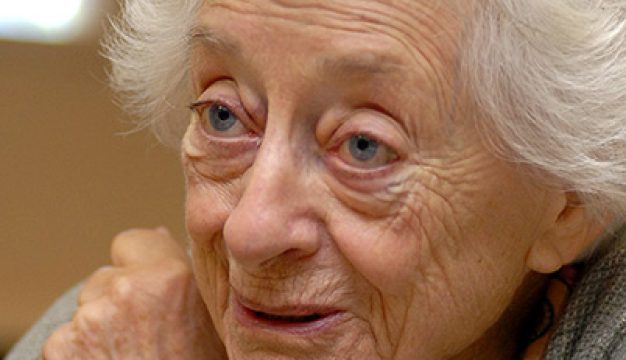Cornelius Nathaniel Dorsette
Cornelius N. Dorsette (1852?-1897) is often identified as the first licensed or certified black physician in Alabama. He maintained a long-time practice in Montgomery, Montgomery County, where he spent the majority of his life. In addition to his successful medical practice, Dorsette owned an office building, operated a drug store, and established the first hospital for blacks in the state. He supported other black professionals in the city and was active in the Republican Party. Although he is often described as the first black physician in the state, he was one of several who practiced in the 1880s.
Dorsette's birthplace is usually identified as Eden, North Carolina, in Rockingham County; his birth year may have been 1851, 1852, or 1859. He was the first of six children of David, likely a farmer, and Lucinda Dorsette. He is often described as having been born in slavery. Dorsette attended primary school in Thomasville, Davidson County, and then entered the famed Hampton Institute, a Virginia college for freed slaves founded in 1868, where he was a classmate of Booker T. Washington, founder of what is now Tuskegee University. Dorsette graduated from Hampton in 1878.
A white trustee of the college, a Dr. Vosburgh, hired Dorsette to work as a driver and handyman at his home in Syracuse, New York. Vosburgh inspired Dorsette to seek a career in medicine and assisted with that goal. Dorsette studied Latin and then entered Syracuse University's medical school but was forced to drop out for health reasons. After he recovered, and with an offer of financial assistance from Vosburgh, Dorsette applied to the medical school at the University of the City of New York. He was turned down because of his race but was admitted to the University of Buffalo medical school and became the second black graduate there in 1882.
During the next two years, Dorsette worked in various medical positions in New York, including the poor house and insane asylum of Wayne County. He also had a general practice and worked in the psychiatric ward of the hospital in Lyons, New York. This working pace enabled him to repay Vosburgh by 1884.
In early 1883, Dorsette began efforts to locate elsewhere. He contacted his Hampton friend Booker T. Washington to get his advice; Washington, who had been named the first leader of the new Tuskegee Normal School for Colored Teachers in 1881, urged Dorsette to relocate to Montgomery. In a February 28 letter, Washington assured his friend that such services were greatly in need in Alabama's capital city. Upon visiting Montgomery, Dorsette apparently liked his prospects enough to move to the city. He faced one major hurdle, however, in the state's medical certification process. Under the Alabama Medical Practice Act of 1877, candidates had to sit for a six-day examination by either a county board or the state board of medical examiners in Montgomery. All members of such boards were white male physicians, and Dorsette's performance was judged harshly by them but he passed and was licensed.
Dorsette quickly earned the respect of Montgomery's white medical leaders, but at first the African American citizens did not respond positively to his presence. Early black physicians faced suspicion because they were seldom as well-trained as their white counterparts, and African Americans who could afford medical care preferred to see white doctors. Dorsette overcame this attitude by his willingness to drive into the countryside to provide care and deliver babies.
He travelled to Tuskegee to serve as Washington's personal physician and offer care to faculty and students as well. He used his knowledge of vaccines to limit the scope of a smallpox epidemic in central Alabama. In the early 1880s, he was appointed to the school's Board of Trustees and served until his death. In 1891, he tutored Halle Tanner Dillon, a graduate of the Woman's Medical College of Pennsylvania whom Washington had recruited to become the staff physician at Tuskegee. With Dorsette's help, she became both the first black woman to take the exam and the first woman to pass the test in the state.
Despite threats from some whites who resented his success, Dorsette remained in Montgomery. Within a few years, he had built a three-story structure on Dexter Avenue that housed his office, a drug store, and an auditorium on the top floor. He also provided space to other black physicians, as well as pharmacists, a dentist, and an attorney. Also located in the Dorsette Building was the office of Harvey Patterson, a newspaper editor who published the Montgomery Argus for the local black community. Dorsette lost ownership of the building in the 1896 economic depression, however.
Soon after his arrival in Montgomery, Dorsette had married Sarah Hale, but she died after less than a year. Her father was James Hale, the wealthiest black man in Montgomery at that time, and Dorsette convinced him that the city needed an infirmary for blacks. Hale donated land, and a white women's club helped Dorsette raise money for the building and its operation. The first such facility for blacks in Alabama, Hale Infirmary opened in 1890 and operated until 1958.
In 1886, Dorsette married Lula Harper of Augusta, Georgia, with whom he had two daughters. Dorsette had expressed concerns about his health to Washington since the 1890s, and after a damp and cold hunting trip on Thanksgiving Day in 1897, Dorsette contracted pneumonia; he died on December 7. His funeral procession was said to be the largest ever held in Montgomery for a black citizen up to that time. The service was held at what is now Old Ship AME Zion Church, founded in 1852, the oldest black congregation in the city.
Additional Resources
Cobb, W. Montigue. "Cornelius Nathaniel Dorsette, M.D. 1852-1897." Journal of the National Medical Association 52 (November 1960): 456-59.



